2019 Jeep Cherokee First Drive Review
Intelligent drivetrain and packaging make this Jeep a capable trucklet
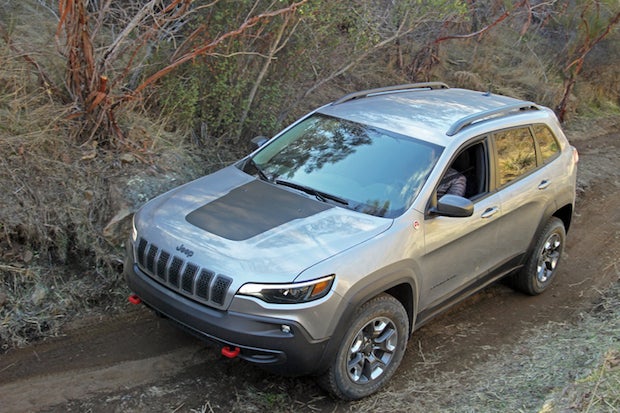
Jeep's revised-for-2019 Cherokee is embarrassingly capable off-road - if you don't mind dragging a skid plate now and again - and is positioned to do a fine job serving motorists who inhabit climates and conditions that are less than ideal. It's available with two willing engines, and offers enough upscale features to validate its cost.
READ MORE: 2018 Jeep Wrangler JL Review
The updated Cherokee (the second iteration of this platform) will appear in showrooms in the first months of 2018. The base-model two-wheel drive Latitudewill start in the low $20,000s, with a $1500 premium for all/four-wheel drive. About two-thirds of Cherokees purchased are four-wheel driven. While options on the fanciest Cherokees could push out-the-door cost close to $40,000, the Trailhawk model - and all its knobby goodness - can be had in the mid $30,000s. 2019 models are, by and large, less expensive than 2018s.
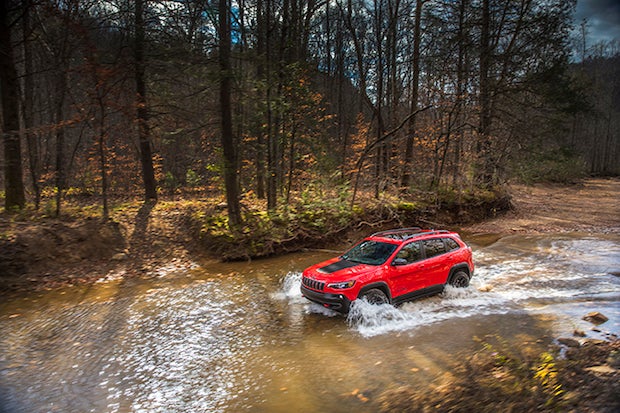
It's easy to glance past a less-than-all-new update as inconsequential, but some updates are updatier than others. The Cherokee's engineers tweaked details throughout the platform, including items as varied as increased back-back space with a relocated license plate, reduced weight via lighter components, and the addition of a spirited new turbo four on the options list.
Though some of these improvements were as much an opportunity to reduce weight as the result of global parts availability from parent company FIAT, there are enough changes to the 2019 Cherokee to add up to a valiant revision of the nameplate.
A Harder Look at the New Cherokee
This is not the Cherokee of yore: no solid axles, no manual transfer case, no clutch pedal, no Dana nothin'. It's nanny-enabled, and less truckish. But wait a minute: this Cherokee is capable on-trail. It has a mechanical locker in the rear (more on that later). It makes drivers comfortable in less-than-ideal weather and road conditions. It can take some abuse (as Jeep's evaluators repeatedly confirmed). Those are all Jeep characteristics, yes?
To their credit, the Cherokee's planners renovated the predecessor's Futurama-robot front end and grille combo. The new Cherokee's hood/bumper/grille layout gives off a baby Grand Cherokee vibe that's more mature, especially in Limited trim. The headlight packages (as heavy with LEDs as most makers nowadays) are well integrated into the overall look, but (like most makers nowadays) all the LEDs bring too many pieces of flair to the table.
Suspension travel on all 2019 Cherokees is the same: 6.7 and 7.8 inches from droop to stuff, front and rear. From that baseline, the Trailhawk is armed with a number of mods that underwrite its on-trail effectiveness. Trailhawks roll an inch higher than other Cherokees (8.7-in ground clearance), and wear formed steel skid plates. Reduced front and rear fascias improve the Trailhawk's approach and departure angles, but bring back a little of the I-Robot. Taller wheel wells accommodate rock and intrusion-friendlier 17-inch cast aluminum wheels.
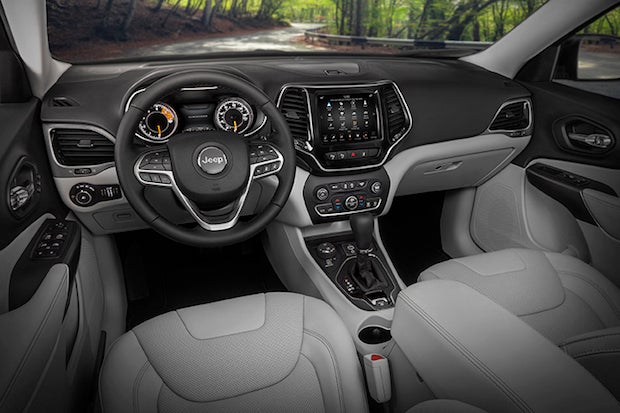
And about that drivetrain. Three arrangements are available - Active Drive I, II and Drive Lock. I is very commute, bad weather, lousy conditions-friendly - your daily-driver all-wheel drive - while II has switchable "two-speed" low-range multiplication (a 51.2:1 creeper gear for the turbo four, 48.3:1 for the V6) and a disconnect option that enables the Cherokee to be flat towed. Active Drive Lock is standard on the Trailhawk. It includes all the functions of the other packages, plus a mechanical-locking rear differential. All three systems have the Cherokee's Selec-Terrain conditions-facilitation controls, which govern minute details of wheel, brake, trans and engine behavior to enhance tractability (albeit electronically, removing some driver control in the process).
Drivetrain Parts and Design
We dug into details of that rear locker with Rich Silbert, Cherokee Engineering Development Manager. "The same mechanism that shifts the gear reduction locks up within the planetary. It's not a brake or limited-slip 'locker.' An output shaft locks to the output of the planetary...pushing a sleeved collar into the planetary. The design doesn't require fuses or safeties to protect it from overload."
The front-wheel drive bias of the Cherokee's drivetrain is absolute in unchallenging terrain - 100 percent forward. The rear axle couples to the transverse front-drive layout via two clutches: a wet-plate in the rear, which, once actuated, activates the dog clutch in front. Both the driveshaft and rear diff start or stop spinning when triggered - otherwise, the rear axles freewheel when the Cherokee is two-wheel drive. The variable torque splitting that's symptomatic of all-wheel drive (versus the 50/50 split of mechanical four-by) is handled by the Cherokee's rear diff. The front differential handles front-wheel multiplication, as well as the routing of power to the rear wheels.
Final Observations on the 2019 Cherokee:
- The new direct-injection turbo 2.0-liter is a snappy small motor that's a pleasure to flog. The inline four's power is a square 270 hp and 295 lb-ft of torque. Tip-in and mid-throttle control was very good - though not great - but its satisfying snarls and the fat mid-range powerband made driving the turbo'd Cherokee on the street entertaining.
- Sadly, the weight penalty of the packaging hardware necessary to make the turbo'd four-banger work right underhood alleviates any weight savings over the holdover V6. You'd do well with either engine, though the 3.2-liter six-cylinder is suggested if you plan to tow. Jeep said its shoppers like having the "big" engine option.
- No matter how nicely you ask, you cannot get a clutch in a new Cherokee. However, the nine-speed (that's a lot of speed) ZF automatic is integral to the enhanced crawlability of the Cherokee, so it's got good reason to stick around.
- Don't ask for a hybrid, either. Efficiency is a good thing: applaud Jeep's focus on weight-reduction in the new Cherokee. The new model is 150lbs lighter than its predecessor, despite being larger and wider. This was achieved with increased use of aluminum and composites.
- Speaking of weight: the new Cherokee is graceful for what it is - a tall wagonlike trucklet - but the mass is there. All that glass and sheetmetal means it still handles like it's tall when pushed.
- ESS (Engine Stop-Start) is blissfully defeatable. We wish it defaulted to defeated.
- The Cherokee is built in Illinois, with parts from all over the planet.
Which Came First, the Driver Or the Truck?
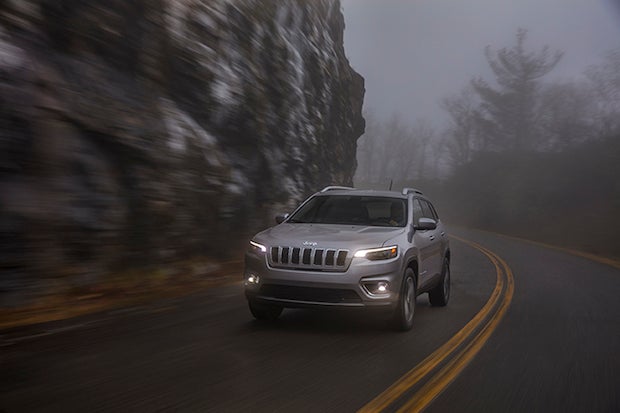
Does a trucklet-style Jeep bring new fans into Jeep's orbit (and Jeepin' values)? Does the ability to drive farther on-trail than the usual suspects (the competition, ie: CR-V, RAV4, et al) introduce new 'froaders to Off-Road.com's audience? We like to think so.
To argue the flipside: a competent device like the Cherokee is able to put a novice four-wheeler so far outside their skillset that the driver becomes totally dependent upon the vehicle. Therein lie risks, and the arguments for following rules of the trail like always four-wheeling with others, and not driving beyond your plan. Good thinking, and good advice, though applicable to a limited set of potential Cherokee shoppers.
The question about the new Cherokee's identity is your determination to make. Off-Road.com explored - and pushed - the capabilities of this trucklet's trail readiness and competence in legitimately lumpy four-wheeling scenarios. It is capable. But is it a truck? Is it a Jeep in the traditional Wrangler-cum-GP-cum-CJ? Or is it a wagon: a well-endowed, well-clearanced, well-fitted and well-thunk micro-froading Jeep?
Visit a dealership and try one on for yourself.

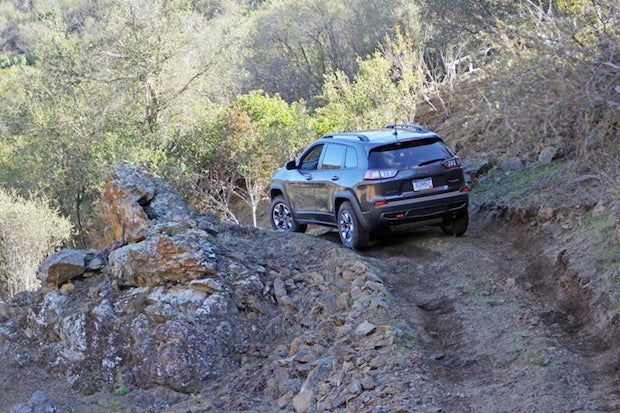
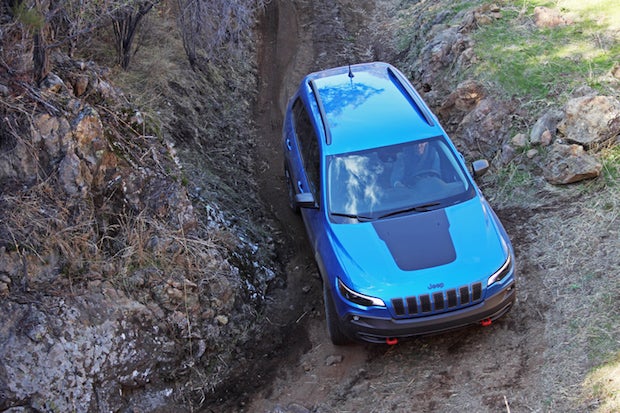
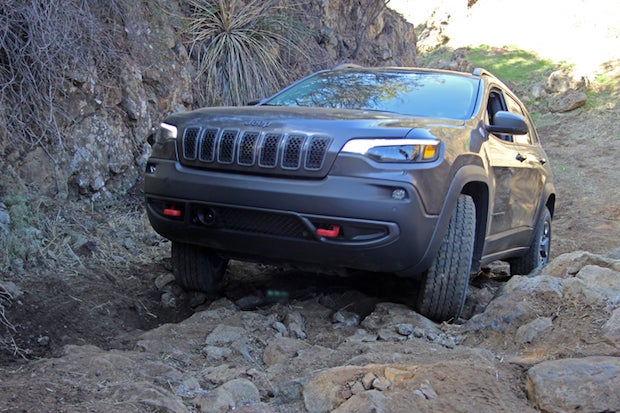
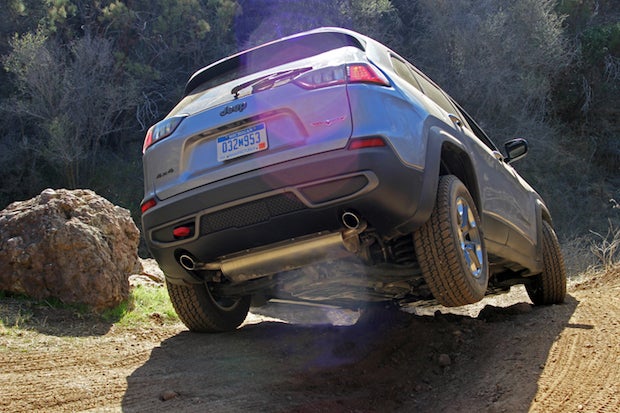

 Your Privacy Choices
Your Privacy Choices